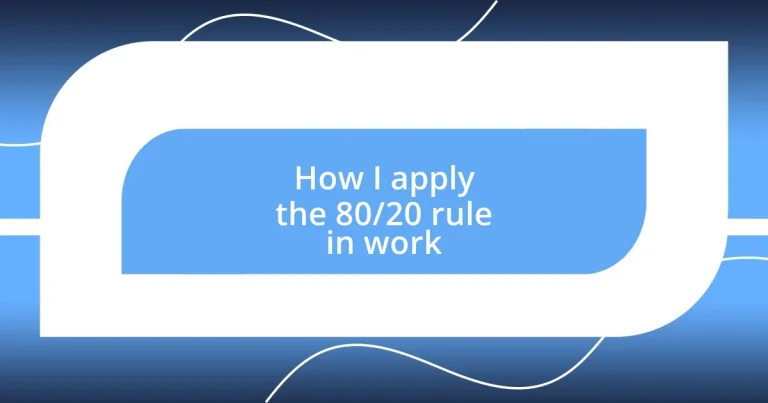Key takeaways:
- The 80/20 Rule reveals that focusing on the vital few tasks can significantly enhance productivity and reduce stress.
- Identifying key activities and eliminating time-wasters, like excessive email checking and social media distractions, are crucial for maximizing efficiency.
- Regular evaluation and adjustment of strategies through reflections and team feedback lead to continuous improvement in work performance.
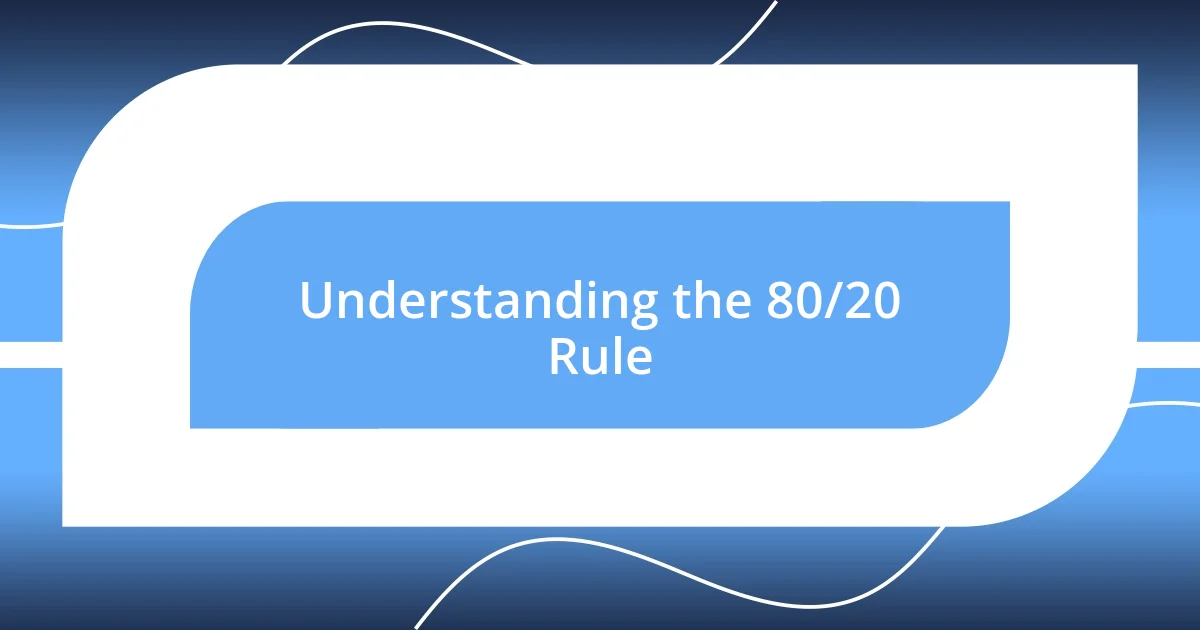
Understanding the 80/20 Rule
The 80/20 Rule, also known as the Pareto Principle, suggests that roughly 80% of outcomes come from just 20% of the inputs. I often find this concept incredibly liberating; it makes me reevaluate where I focus my energy. Have you ever noticed how a few tasks often yield the most significant results? It’s a realization that can be both eye-opening and empowering.
I remember a time when I was overwhelmed by my to-do list. I decided to take a step back and analyze which tasks truly made a difference. To my surprise, I discovered that a handful of key tasks not only boosted my productivity but significantly contributed to my goals. This process wasn’t just analytical; it was intensely gratifying to see how focusing on the right 20% transformed my workflow and reduced my stress.
Understanding the 80/20 Rule isn’t just about numbers; it’s a mindset shift. Rather than feeling guilty about not completing every task, I began to embrace the idea that prioritizing effectively is the key to success. It’s fascinating to consider: what if you could eliminate 80% of your workload by simply identifying the vital few tasks that truly matter?
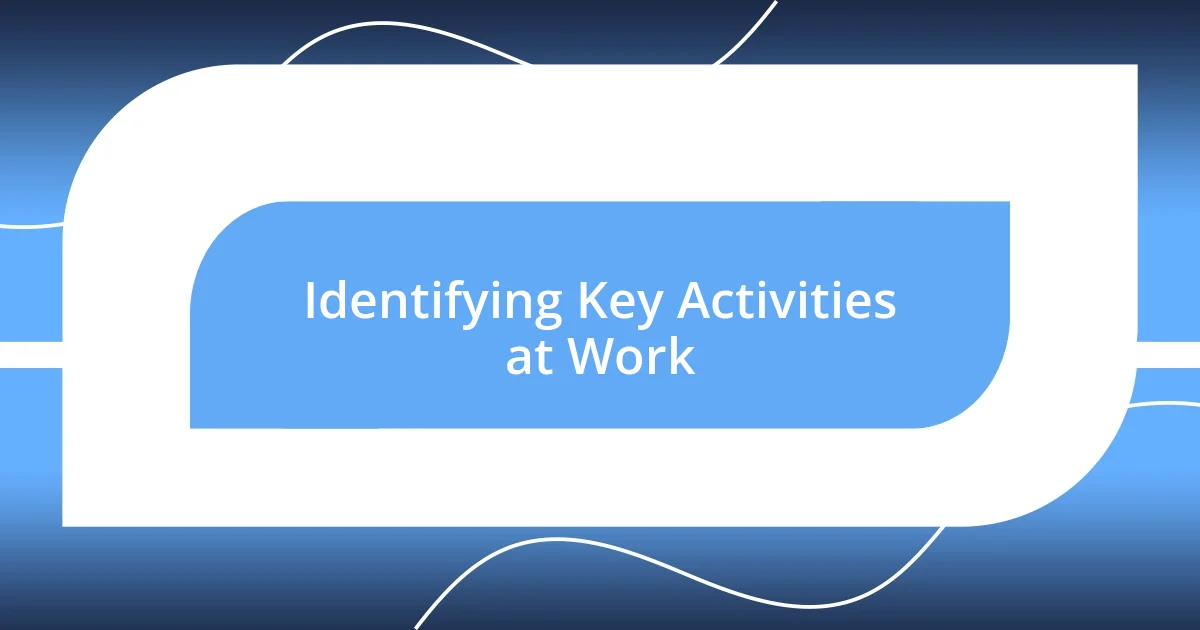
Identifying Key Activities at Work
Identifying the key activities at work is where the magic really happens. When I took the time to evaluate my daily tasks, I was amazed at how few actually drove my projects forward. I remember identifying a recurring client meeting that took up hours, yet output was minimal. By shifting to bi-weekly check-ins, I found not only more time but also an increase in clarity and results.
It helps to write down all your tasks and assess which ones yield the most impact. I found a simple approach: I created a quadrant table to categorize tasks by urgency and importance. Surprisingly, many urgent tasks didn’t align with my long-term goals. This realization prompted me to focus on high-value activities that aligned with my role at work, leading to a satisfying boost in my performance.
Another technique I employed was asking for feedback from my team. Engaging in open conversations about which tasks resonated most with them led to revealing insights. That dialog helped pinpoint activities that mattered, not just for me but for the group. Have you tried discussing your priorities with colleagues? It can often lead to productive outcomes you didn’t foresee.
| Task Type | Impact Level |
|---|---|
| High Impact | Key meetings, Strategic planning |
| Low Impact | Routine paperwork, Unnecessary emails |
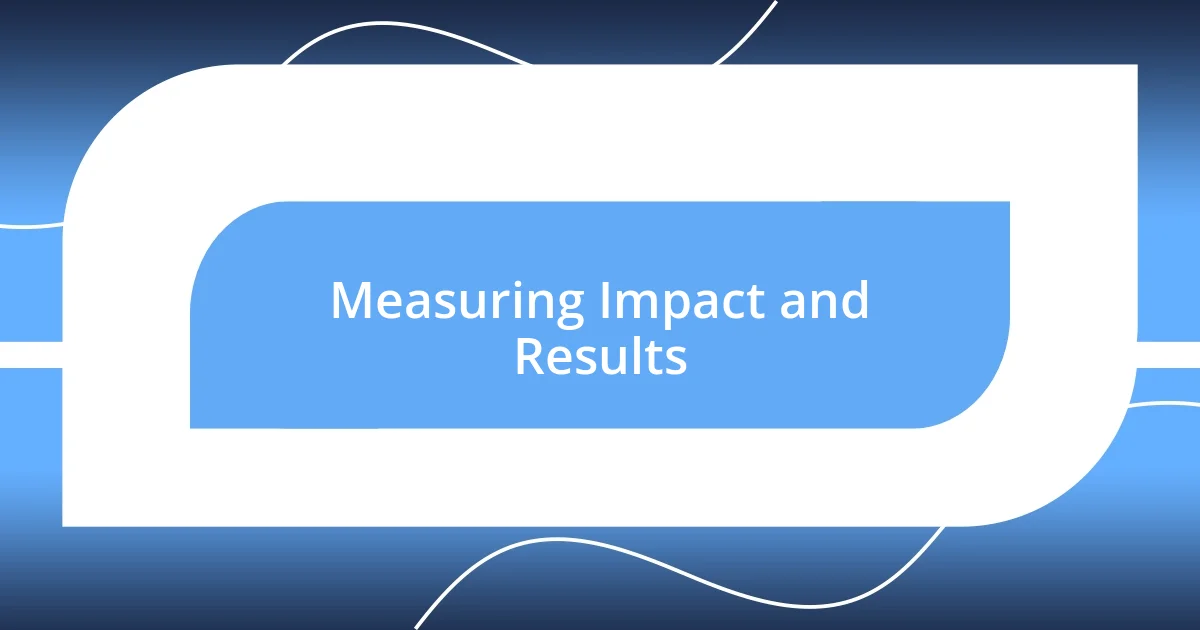
Measuring Impact and Results
Measuring the impact of my work can sometimes feel like a daunting task, but I’ve found that a few simple methods can shine a light on what truly matters. One trick I’ve adopted is keeping a results journal. After completing significant tasks or projects, I jot down outcomes. This helps me visualize what actions led to tangible results, offering clarity on where to focus my energy moving forward. I can often pinpoint the activities that align with the 80% of results I want to achieve.
To gauge the impact more systematically, I rely on the following steps:
- Set Clear Metrics: Determine what success looks like for each key task.
- Review Regularly: Weekly reflections help track progress and adjust priorities.
- Solicit Feedback: Regular check-ins with peers can provide insights into how my work is perceived and its effectiveness.
Each step adds a layer of accountability and reflection, ensuring I stay aligned with my most impactful contributions.
On the flip side, I’ve made it a point to celebrate small victories. Recognizing moments of success, even when they feel trivial, brings a sense of achievement that fuels motivation. I recall a project where a minor change I implemented resulted in a significant increase in efficiency for the team. Celebrating that shift boosted my morale and further motivated me to seek similar high-impact improvements. It’s those reflections, combined with measurable data, that help me stay focused on what truly drives results in my work.
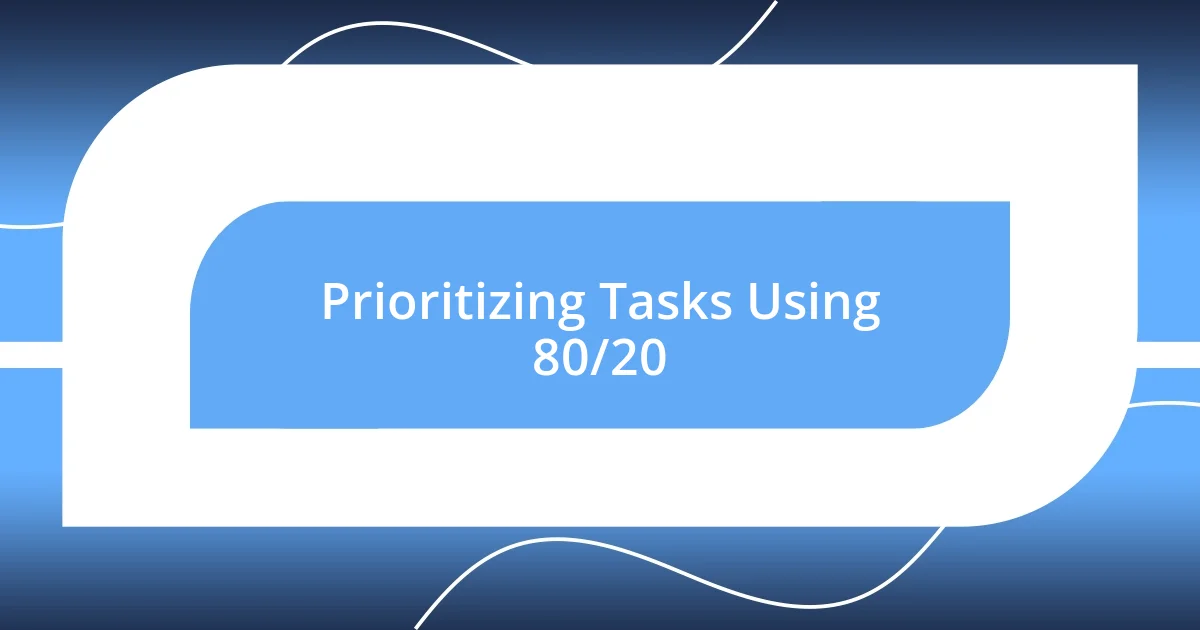
Prioritizing Tasks Using 80/20
Prioritizing tasks using the 80/20 rule has transformed how I approach my workdays. I once found myself tangled in endless to-do lists, believing that being busy equated to being productive. That changed when I started asking myself, “Which tasks will actually drive my goals?” By narrowing down my focus, I emphasized the most effective projects. For instance, tackling a single, high-priority project each day instead of juggling many tasks has not only improved my output but also reduced my stress levels immensely.
One of my favorite techniques involves utilizing a simple scoring system. When I categorize my tasks, I assign points based on their expected impact on my goals. This practice revealed that certain ongoing projects weren’t worth the effort I was investing in them. It was a surprise to realize that by letting go of a few low-impact tasks, I could concentrate on those that truly mattered, like finalizing a crucial presentation for a client. This shift felt liberating and reinforced the idea that less can indeed lead to more.
I also began checking in with my emotions during this process. When I engaged in tasks that aligned with the 80/20 rule, I felt energized and motivated. Conversely, those time-consuming, unfruitful tasks left me drained. Have you ever noticed how some responsibilities spark joy while others simply feel like a burden? Understanding this emotional connection has helped me prioritize with greater clarity, ensuring I invest my energy where it counts. Making these adjustments has not only improved my performance but made work more enjoyable overall.
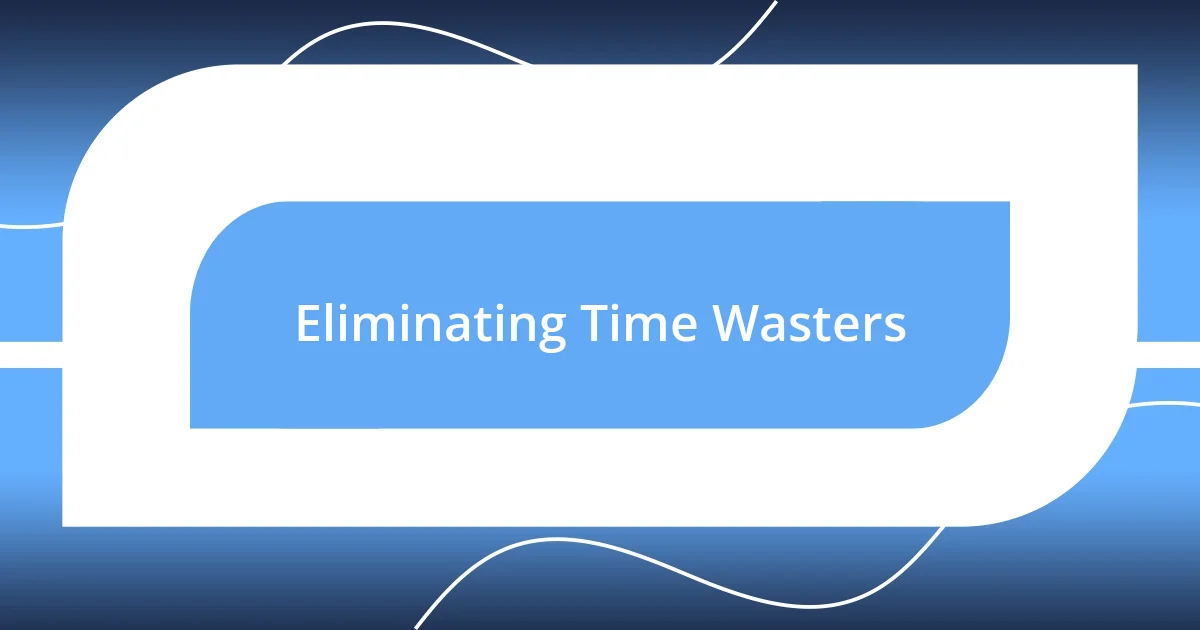
Eliminating Time Wasters
Eliminating time wasters is crucial for maximizing productivity, and I’ve seen firsthand how identifying these distractions can transform my workday. For instance, I used to spend hours on email, constantly checking for updates instead of diving deep into my tasks. It was a shocking realization—those minutes added up to hours each week! I decided to designate specific times for checking emails, which freed me to immerse myself fully in more impactful projects.
Social media can also be a sneaky time waster. I remember how scrolling through my feed would eat away my focus. To tackle this, I implemented a mobile app that limited my access during work hours. It felt a bit like putting myself in a restricted zone, but the difference was remarkable! I found my concentration improved, allowing me to dive deeper into creative tasks without the incessant pull of notifications. Have you ever noticed how quickly minutes can turn into hours when you’re distracted? Recognizing this pattern was eye-opening for me.
Lastly, I’ve found that saying “no” can be a powerful time-saver. Initially, I felt guilty turning down extra meetings or projects that didn’t align with my goals. However, I quickly realized that by preserving my time for high-priority work, I could contribute more significantly where it mattered most. I often ask myself, “Does this bring me closer to my objectives?” If not, I remind myself that it’s perfectly acceptable to set boundaries. This shift has not only lightened my load but also enhanced the quality of my work—something I prioritize above all.
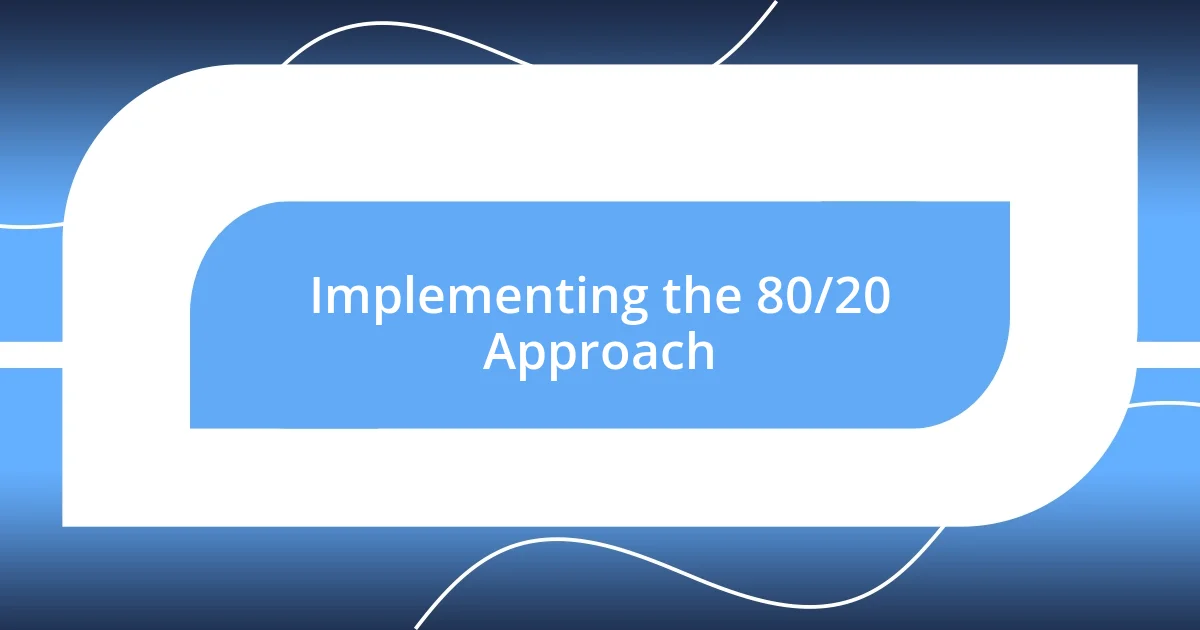
Implementing the 80/20 Approach
Implementing the 80/20 approach in my daily work routine has been a game-changer. I started by reviewing my weekly tasks and asking, “Which ones bring the most value?” It was enlightening to see just how much time I could save by concentrating on only a handful of key tasks each week. This shift allowed me to stay focused and even opened the door to smarter delegation—you really can’t do it all alone!
One memorable moment was when I finally decided to allocate my mornings to the most critical project. I remember how freeing it felt to set aside my multitasking habits and channel my energy into making substantial progress on that one thing. Suddenly, I was racing toward goals that once seemed distant, and my afternoons were available for smaller tasks that didn’t require as much brainpower. Does that make sense? It’s like running a marathon—you don’t sprint at the start; you pace yourself for a stronger finish.
Another important element I implemented was regular check-ins with my priorities. I learned to schedule brief reflections at the end of each week. This practice not only helped me assess what worked well but also allowed me to pivot and recalibrate for the following week. There were times when I realized a particular task was draining energy without yielding significant results. It gave me the confidence to adjust my approach. Have you tried a similar reflection? I find it’s a small step that can lead to massive improvements in staying aligned with what truly matters in my work life.
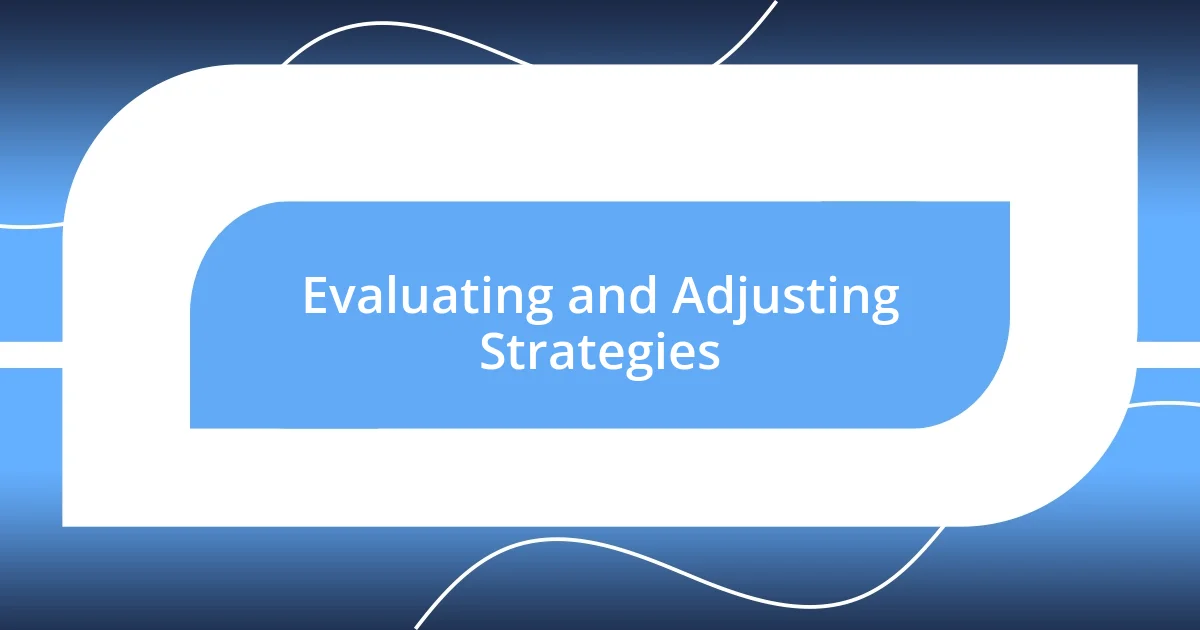
Evaluating and Adjusting Strategies
Evaluating strategies is something I take very seriously, as it inevitably shapes my ongoing productivity. I remember one month when I dedicated time each Friday to analyze my completed projects versus the effort spent. I was quite surprised to discover that some substantial tasks didn’t deliver the expected outcome, prompting me to rethink my approach. Have you ever had a similar eye-opening experience? It feels liberating to let go of what’s not working.
Adjusting strategies comes naturally when I regularly check in on my progress. For instance, I had a specific goal involving client outreach that stalled because I didn’t reassess my methods. By tweaking my communication style based on feedback, I was able to re-engage those clients effectively. It’s fascinating how even minor adjustments can yield significant changes, isn’t it?
Moreover, I’ve learned that keeping an open line of communication with my colleagues is essential. When we share insights about what works and what doesn’t, it creates a collaborative atmosphere that fosters improvement. I recall a brainstorming session that produced unexpected strategies for project management—I left feeling energized and inspired. Engaging with others not only helps refine my strategies but also reinforces my commitment to continuous growth. Have you thought about how collaboration might refine your own work strategies?












